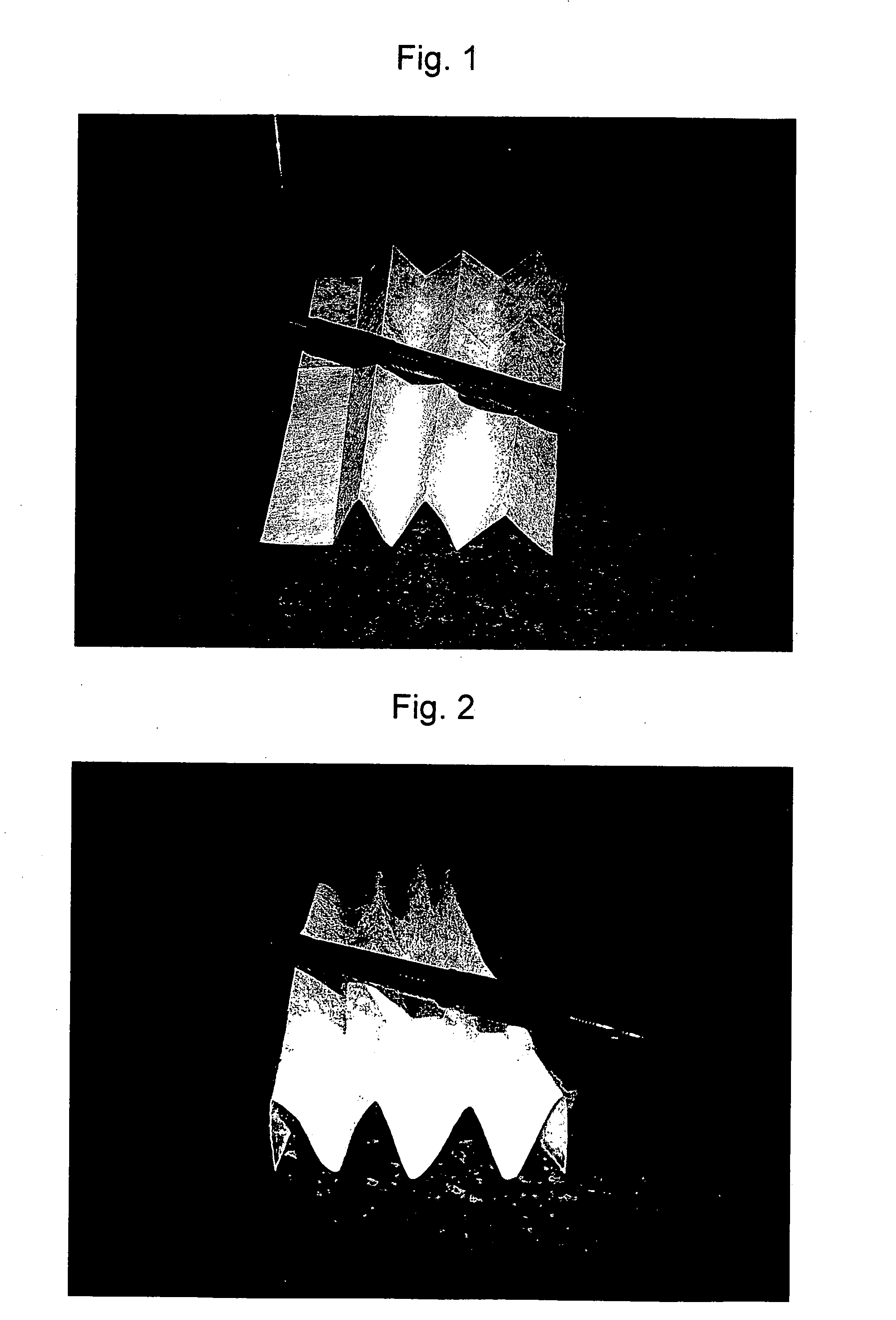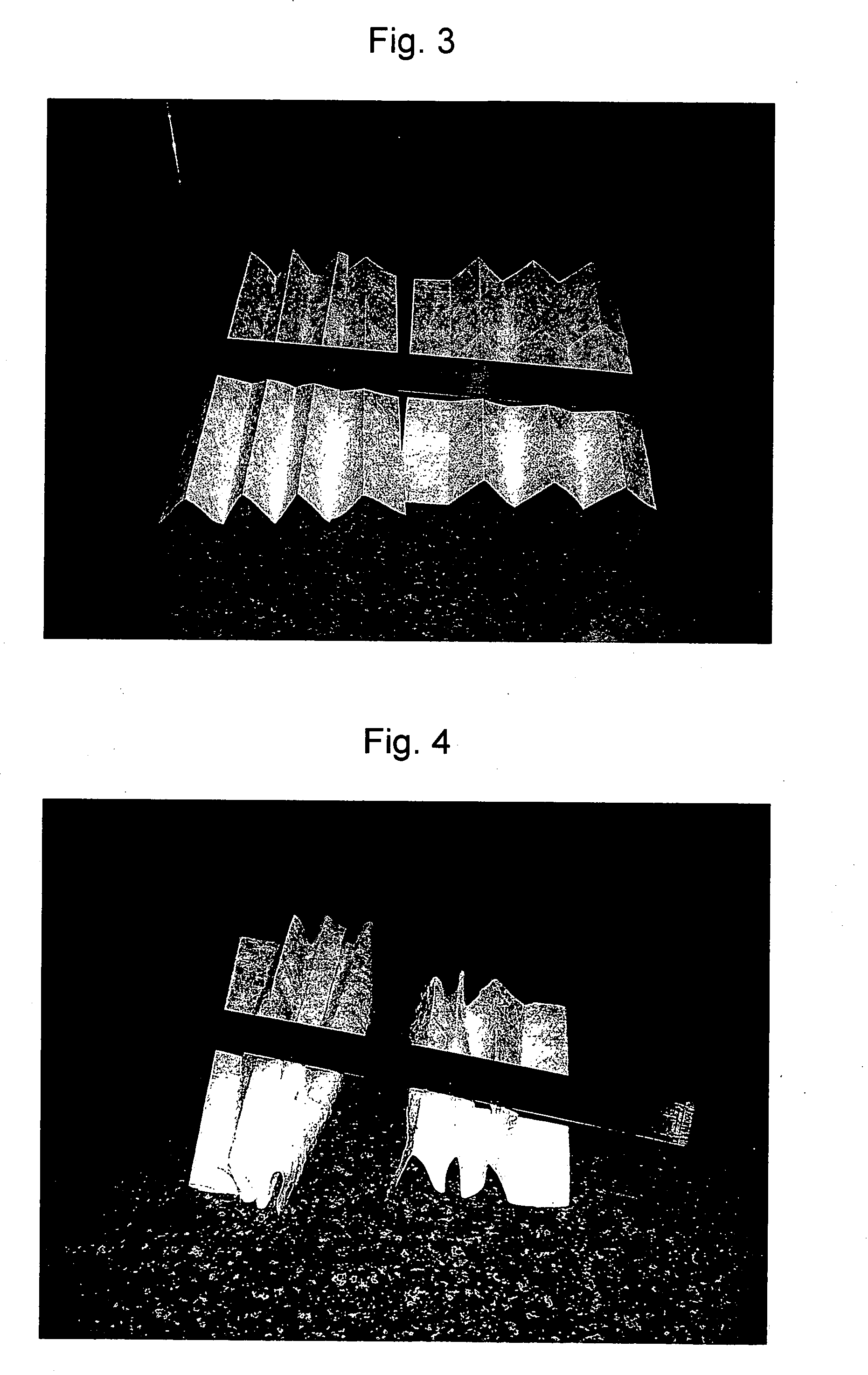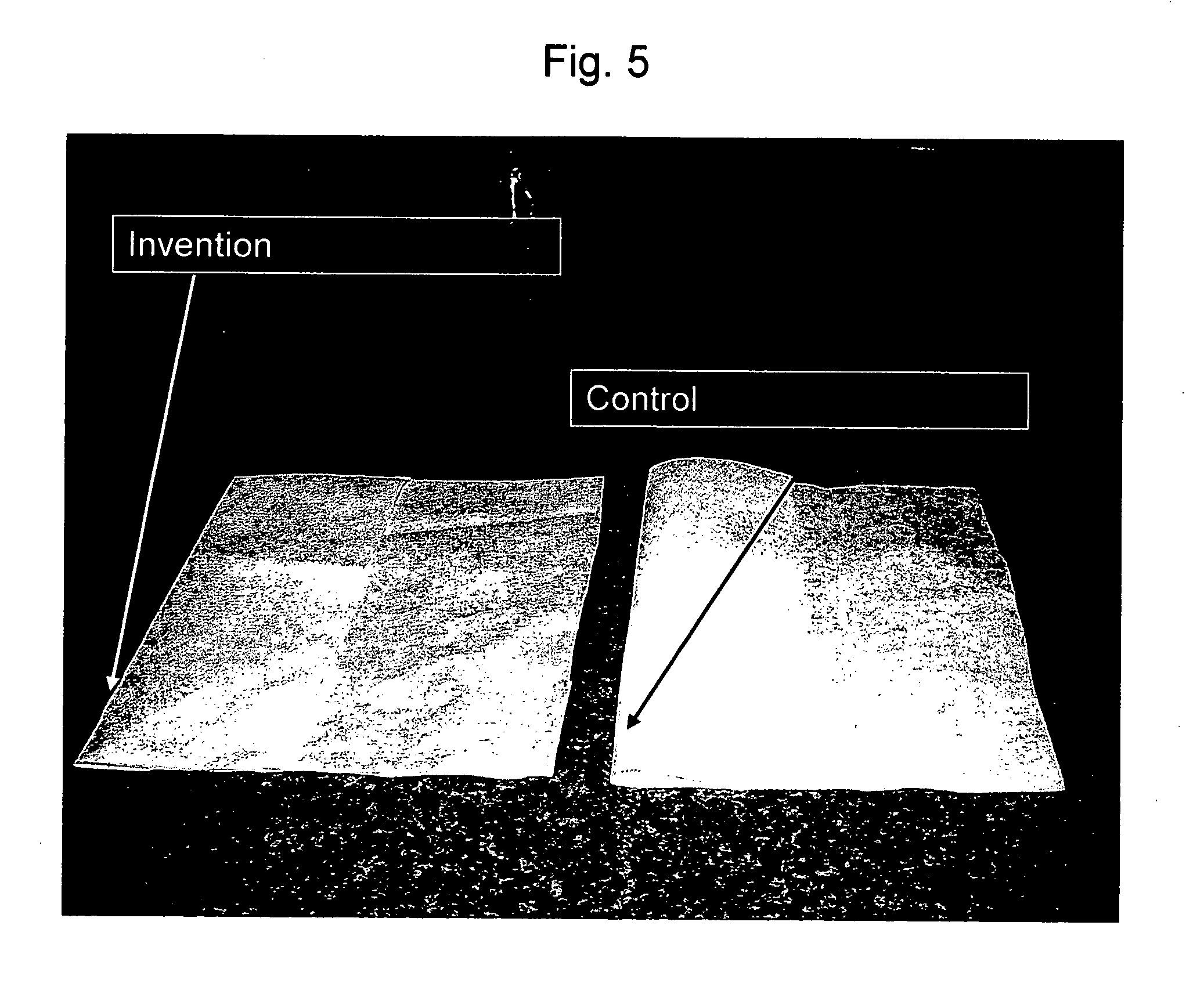High-strength meltblown polyester webs
a technology of polyester webs and meltblown polyester, which is applied in the field of meltblown polybutylene ester nonwoven webs, can solve the problems of increasing the production cost of polyester filters, poor strength values, and poor tensile strength of pbt meltblown webs, and achieves efficient and convenient production and high tensile strength values
- Summary
- Abstract
- Description
- Claims
- Application Information
AI Technical Summary
Benefits of technology
Problems solved by technology
Method used
Image
Examples
examples
[0043]For purposes of illustration, the polymerization procedure used to produce three polyester resins of the invention is described briefly.
[0044]Polymer A
[0045]Polyester copolymers were prepared in a 50-Gallon batch reactor with a helical agitator. Dimethyl terephthalate (DMT) 67.35 Kg, 1,4-butanediol (BDO) 39.84 Kg, 2-methyl-1,3-propanediol (MPDIOL®) 2.34 Kg, and 16.3 g tetra-n-butyl titanate were charged into the reactor while the reactor is purged with dry nitrogen. The reactor was heated to 200° C. The ester-interchange reaction was considered to be complete when more than 95% of the theoretical methanol had been collected. The reactor temperature was increased to 250° C. while the reactor pressure was gradually reduced to 0.1 mmHg over a period of 50 minutes. The polymerization mass is agitated at 245-250° C. / 0.04 mmHg until a specific agitator torque was reached. The polymer melt mass was extruded and cut into pellets. About 72 Kg polyester copolymer was obtained, which had...
PUM
| Property | Measurement | Unit |
|---|---|---|
| Length | aaaaa | aaaaa |
| Diameter | aaaaa | aaaaa |
| Percent by mole | aaaaa | aaaaa |
Abstract
Description
Claims
Application Information
 Login to View More
Login to View More - R&D
- Intellectual Property
- Life Sciences
- Materials
- Tech Scout
- Unparalleled Data Quality
- Higher Quality Content
- 60% Fewer Hallucinations
Browse by: Latest US Patents, China's latest patents, Technical Efficacy Thesaurus, Application Domain, Technology Topic, Popular Technical Reports.
© 2025 PatSnap. All rights reserved.Legal|Privacy policy|Modern Slavery Act Transparency Statement|Sitemap|About US| Contact US: help@patsnap.com



